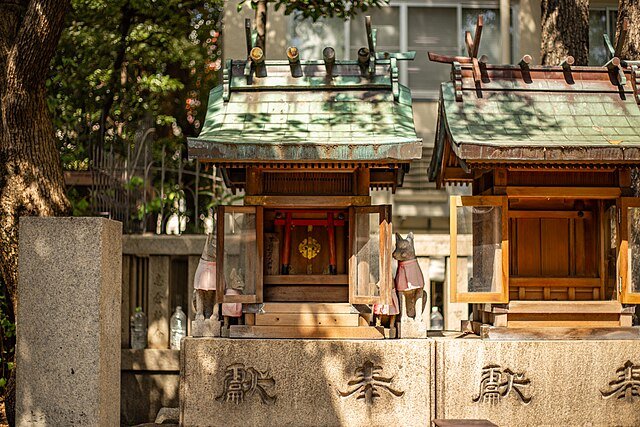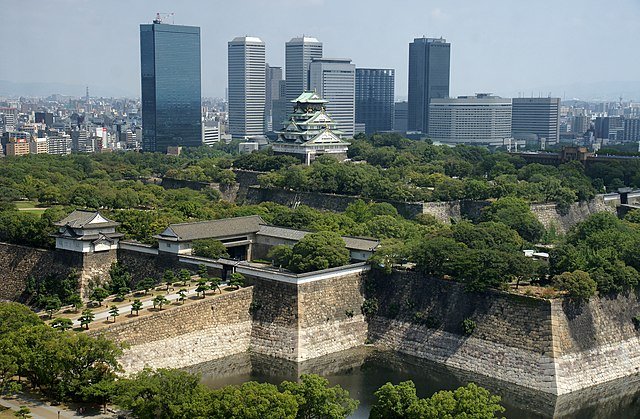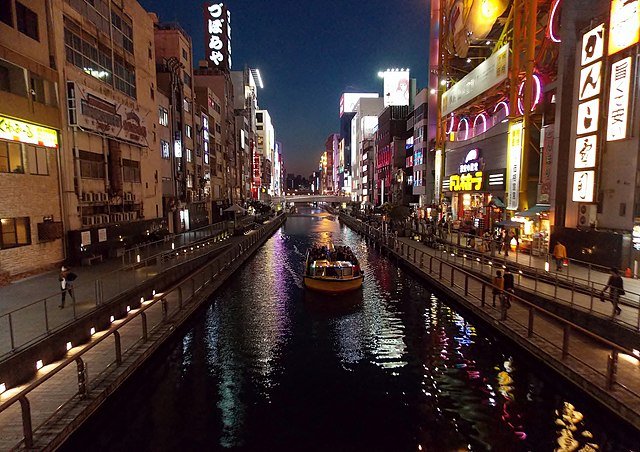I’ll never forget the moment I slurped my first bowl of tonkotsu ramen at 2 AM in a tiny Osaka alley, surrounded by salarymen unwinding after work. The rich, creamy broth warming my hands, the chef’s weathered face breaking into a smile as I mumbled “oishii” through noodles—that’s when I realized I’d been doing Japan all wrong.
Most travelers spend 24 hours in Osaka, snap photos at Dotonbori, grab some takoyaki, and rush off to Kyoto. But here’s what I discovered during my month-long deep dive into Japan’s kitchen: Osaka isn’t just a pit stop—it’s a food pilgrimage that deserves at least 72 hours of your undivided attention.
Why Osaka Owns Japan’s Food Scene (Spoiler: It’s Not Just the Takoyaki)
Osaka didn’t earn the nickname “Japan’s Kitchen” by accident. This city has been the country’s merchant hub for over 400 years, creating a culture where good food isn’t just appreciated—it’s demanded. While Tokyo focuses on perfection and presentation, Osaka celebrates flavor and soul.
The numbers tell the story: Osaka has more restaurants per capita than any other Japanese city, with over 80,000 eateries serving 2.7 million residents. That’s roughly one restaurant for every 34 people. Compare that to New York’s ratio of 1:83, and you’ll understand why locals say “Osaka people eat until they’re broke” (kuidaore).
What Makes Osaka’s Food Culture Unique
Unlike the refined kaiseki traditions of Kyoto or Tokyo’s innovative molecular gastronomy, Osaka food is about comfort, community, and pure indulgence. The concept of “B-kyu gourmet” (B-grade gourmet) was born here—celebrating dishes that prioritize taste over presentation.

The Ultimate 72-Hour Osaka Food Adventure
Day 1: Street Food Legends and Hidden Gems
Morning (9 AM – 12 PM): Kuromon Ichiba Market Start your journey at Kuromon Ichiba Market, but skip the touristy front stalls. Head straight to the back where locals shop. Try:
- Fresh uni (sea urchin) at Kuromon Sanpei: ¥800 per piece
- Wagyu beef skewers at Meat Shop Takemura: ¥1,200-2,000
- Tamagoyaki sandwich at Marukami: ¥400
Insider tip: Visit before 10 AM when the seafood is freshest and prices are lower.
Afternoon (1 PM – 5 PM): Dotonbori Deep Dive Yes, Dotonbori is touristy, but locals still eat here—you just need to know where to look.
Essential stops:
- Takoyaki at Juhachiban: Founded in 1934, this is where takoyaki was perfected. ¥680 for 8 pieces
- Okonomiyaki at Mizuno: The 70-year-old grandmother still works the grill. ¥1,100-1,500
- Kushikatsu at Daruma: The original kushikatsu shop since 1929. ¥150-300 per skewer
Pro tip: The “no double-dipping” rule at kushikatsu shops is sacred. Break it once, and you’re banned for life.
Evening (6 PM – Late): Shinsekai’s Authentic Side While tourists flock to the neon-lit main strips, real food happens in the side alleys.
Hidden gem: Ganko Sushi Shinsekai. This 50-seat sushi counter serves omakase for ¥3,000—half what you’d pay in Tokyo for similar quality.
Day 2: Beyond the Famous Five
Morning: Namba Yasaka Shrine to Sumiyoshi Taisha Food Trail Take the train to lesser-known neighborhoods where salary workers eat.
Must-try: Menya 7.5Hz in Nippombashi This ramen shop uses a unique low-frequency sound wave process to enhance their tonkotsu broth. Bowl of ramen: ¥880. The wait averages 45 minutes, but locals swear it’s worth it.
Afternoon: Osaka Castle Area Food Hunt Skip the castle gift shop restaurants and explore the residential streets nearby.
Local secret: Okonomiyaki Kiji in Kita-ku Hidden in a residential alley, this 12-seat counter serves the city’s most famous okonomiyaki. No English menu, no tourist crowds—just perfect pancakes for ¥800-1,200.
Evening: Hanshin Department Store Basement (Depachika) The basement food courts of Japanese department stores are legendary among locals.
- Fresh sushi: ¥300-800 per piece
- Wagyu bento boxes: ¥2,000-4,000
- Seasonal mochi: ¥200-500
Day 3: The Local Experience
Morning: Tsukiji-style Fish Market Experience Osaka Central Market in Fukushima isn’t as famous as Tokyo’s Tsukiji, but it’s equally impressive and more accessible.
Breakfast recommendation: Endo Sushi Located inside the market, this 70-year-old sushi counter opens at 5 AM and serves the freshest fish in the city. Chirashi bowl: ¥1,200.
Afternoon: Cooking Class with a Local Family Book a home cooking experience through Traveling Spoon (¥8,000-12,000 per person). Learn to make authentic takoyaki, okonomiyaki, and dashi broth in someone’s home kitchen.
Evening: Izakaya Hopping in Hozenji Yokocho This narrow alley houses 60+ tiny izakayas, each seating 8-15 people maximum.
My favorite: Torikizoku All items ¥350, including draft beer. Their yakitori is simple but perfect, and the atmosphere is pure Osaka.

Beyond Food: Essential Osaka Experiences
Osaka Castle: More Than Instagram Photos
Entry fee: ¥600 adults, ¥350 students Best time to visit: Early morning (9 AM) or late afternoon (4 PM) for fewer crowds
The castle itself is a 1930s concrete reconstruction, but the surrounding park offers stunning views and seasonal beauty. Spring brings 4,000 cherry trees; autumn paints the grounds in red and gold.
Universal Studios Japan: Harry Potter and More
Ticket prices: ¥8,400-10,400 depending on season Express passes: ¥7,800-26,800 (worth it for busy days)
Insider strategy: Buy tickets online in advance and download the USJ app for real-time wait times. The Wizarding World of Harry Potter is spectacular, but don’t miss the Japan-exclusive attractions like Attack on Titan and Demon Slayer rides.
Nightlife in Dotonbori: Beyond the Neon
While the main strip is photogenic, real nightlife happens in the side streets:
- Bar Hopping in Hozenji Yokocho: Tiny bars with 6-8 seats maximum
- Comedy shows at Yoshimoto: Japan’s comedy capital (shows in Japanese, but physical comedy translates)
- Late-night ramen runs: Many shops open until 5 AM
Practical Osaka Information
Getting Around
- Osaka Amazing Pass: ¥2,800 for unlimited subway/bus + attraction discounts
- IC Card (ICOCA): ¥2,000 initial purchase (¥500 deposit, ¥1,500 credit)
- Walking: Dotonbori to Osaka Castle is 2.5km—perfectly walkable
Where to Stay
Budget (¥2,000-4,000/night):
- Hostel Khaosan Osaka
- Guest House Yamato
Mid-range (¥8,000-15,000/night):
- Hotel Keihan Universal City
- Daiwa Roynet Hotel Osaka Namba
Luxury (¥20,000+/night):
- The St. Regis Osaka
- Conrad Osaka
Essential Phrases
- Oishii (oh-ee-shee): Delicious
- Ikura desu ka: How much?
- Sumimasen: Excuse me/Sorry
- Arigato gozaimasu: Thank you very much
Money Matters
Japan is still largely cash-based. Withdraw from 7-Eleven ATMs (accept international cards) and budget:
- Street food: ¥300-800 per item
- Restaurant meals: ¥1,000-3,000
- Fine dining: ¥8,000-20,000
- Transportation: ¥200-400 per ride
Common Osaka Mistakes (And How to Avoid Them)
Mistake #1: Only eating at places with English menus Solution: Use Google Translate’s camera feature or point at photos
Mistake #2: Rushing through in one day Solution: Give yourself at least 72 hours—trust me on this
Mistake #3: Avoiding small restaurants due to language barriers Solution: Locals appreciate effort over perfection. Smile and try!
Mistake #4: Not making reservations Solution: Ask your hotel to help with bookings for popular spots

The Bottom Line: Why Osaka Deserves Your Time
After traveling to 47 countries, I can confidently say that Osaka offers the world’s best bang-for-your-buck food experience. Where else can you eat exceptional takoyaki for ¥600, world-class sushi for ¥3,000, and Michelin-starred ramen for ¥1,200?
But beyond the food, Osaka embodies the heart of Japanese culture without Tokyo’s intensity or Kyoto’s tourist crowds. It’s where salarymen laugh loudly in tiny bars, grandmothers perfect recipes passed down through generations, and strangers become friends over shared bowls of noodles.
Your Next Steps
Ready to experience Osaka’s food paradise? Here’s your action plan:
- Book your trip: Visit during March-May or September-November for best weather
- Reserve accommodations: Book at least 2 months ahead, especially during cherry blossom season
- Download essential apps: Google Translate, Hyperdia (for trains), and Tabelog (Japanese Yelp)
- Get a JR Pass: If visiting multiple cities, the 7-day pass (¥29,650) pays for itself
The ramen shop where this journey began still serves that life-changing tonkotsu broth every night until 3 AM. The chef, now 78, still remembers the gaijin who couldn’t use chopsticks properly but appreciated his craft.
That’s the magic of Osaka—in a world of fast food and chain restaurants, this city still believes that the best meals happen when strangers become friends over exceptional food.
What’s stopping you from booking that flight?

